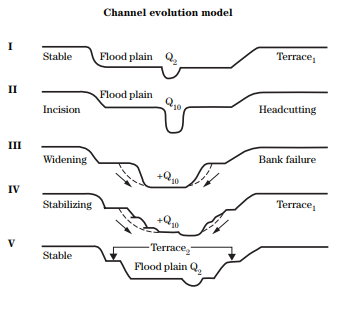Florida’s Natural Melody
Have you ever gone paddling on a local spring run or river and sat silently listening to the wind, bird songs, rustling leaves, or lapping sounds of water along the bank-especially in the early morning? These sounds are Florida’s natural melody-orchestrated by everything in the environment. This nostalgic sound always reminds me of Kenneth Grahame’s The Wind in the Willows. Specifically, the chapter titled “Piper at the Gates of Dawn” where Pan led Mole and Rat to Otter’s son Portly. Pan’s beautifully written melody first caught Rat’s attention but was only evident to those who knew how to listen.

Language With a Landscape
An American landscape architect named Anne Sprin spoke about a natural language with the landscape that we once spoke fluently. The language allowed us to understand our connection and relationship with our environment. As the language disappeared, so did our connection with our environment.
A natural language with the landscape can be spoken, especially among Florida’s springs and rivers. Our waterways interconnect different ecosystems, wildlife habitats, land uses, climates, and communities. Just as our body’s arteries and veins link together to create our circulatory system, our waterbodies link our environment together. Concurrently, just like a pathogen entering our bloodstream can have serious impacts, changes or alterations to water bodies can lead to serious impacts.
Just like Mole and Rat, to better understand Florida’s natural melody, or language, it is important to understand our role and connection with Florida’s riparian corridors. The more we are aware of our impacts and connection to our waterways, nature’s melody becomes clearer. Whereas the more disconnected we become the melody begins to disappear.
Impacts on Waterbodies
We use the phrase anthropogenic impacts to refer to any impacts we cause on our water bodies or environment. Recognizing our impacts to waterbodies is the first step in reconnecting with the natural language. A couple landscape patterns commonly seen that are caused by anthropogenic impacts include stream channelization and harmful algal blooms.
Stream Channelization
Stream channelization is the alteration of a stream’s structure. Stormwater runoff associated with impervious surfaces (ie, sidewalks, roadways, etc) can cause channelization. As more water enters a stream or river during a rain event, water velocity and erosion potential increases. As the water quickly moves through a stream, it can straighten the stream and make the stream deeper. Eventually, the floodplains could be completely cut off from the stream and lead to a higher flooding potential for downstream areas and habitat loss.

Harmful Algal Blooms (HAB)
HAB refers to the algal blooms that reach excessive levels to produce toxic chemicals that impact human health and has the ability to kill plants and animals within our waterbodies. Blue-Green Algal blooms cause inland algal blooms. There are three major factors leading to an outbreak of algal blooms: nutrients, light, and warm water. Improper fertilization practices and mismanaged septic systems contribute to algal blooms by increasing nutrient levels within waterbodies.
Reconnecting with Landscape Best Management Practices
Channelization and HAB are just two examples. According to the United States Department of Agriculture Natural Resources Conservation Service’s 2009 National Biology Handbook, “the conditions of a stream reflect current and past land uses and management actions.” Any change to one of the many factors impacting stream health requires streams to adapt. Therefore it is important to understand the direct relationship we have with the environment.
For many homeowners, land managers, developers, or policymakers, our properties may not be situated along a river corridor, but our landscape decisions are equally impactful. The Florida-Friendly Landscaping™ Program works with our community members to help adopt best management practices that help protect water and natural habitats while helping reconnect us to Florida’s waterbodies.
Overall our environment is incredibly powerful and resilient. It helps us as long we act as its guests, not as its owner. Recognizing our role within our environment reconnects us to a natural language that allows us to hear its beautifully written melodies. Going forward, make sure you stop and listen to the environment around you. What is it trying to tell you? As always, I’m rooting for you.
If you have any questions or need help planning, preparing, or maintaining your garden or landscape, reach out to the Master Gardener Volunteer Help Desk at Alachua County’s extension office for more tips. You can call at (352)955-2402 or email your questions to mag@alachuacounty.us
Related Blog Posts:
Sustainable Landscapes Start in the Past
Beyond the Air We Breathe: The Limitless Benefits of Our Environment – Blog Series
Our Landscapes in the Watershed
 0
0
